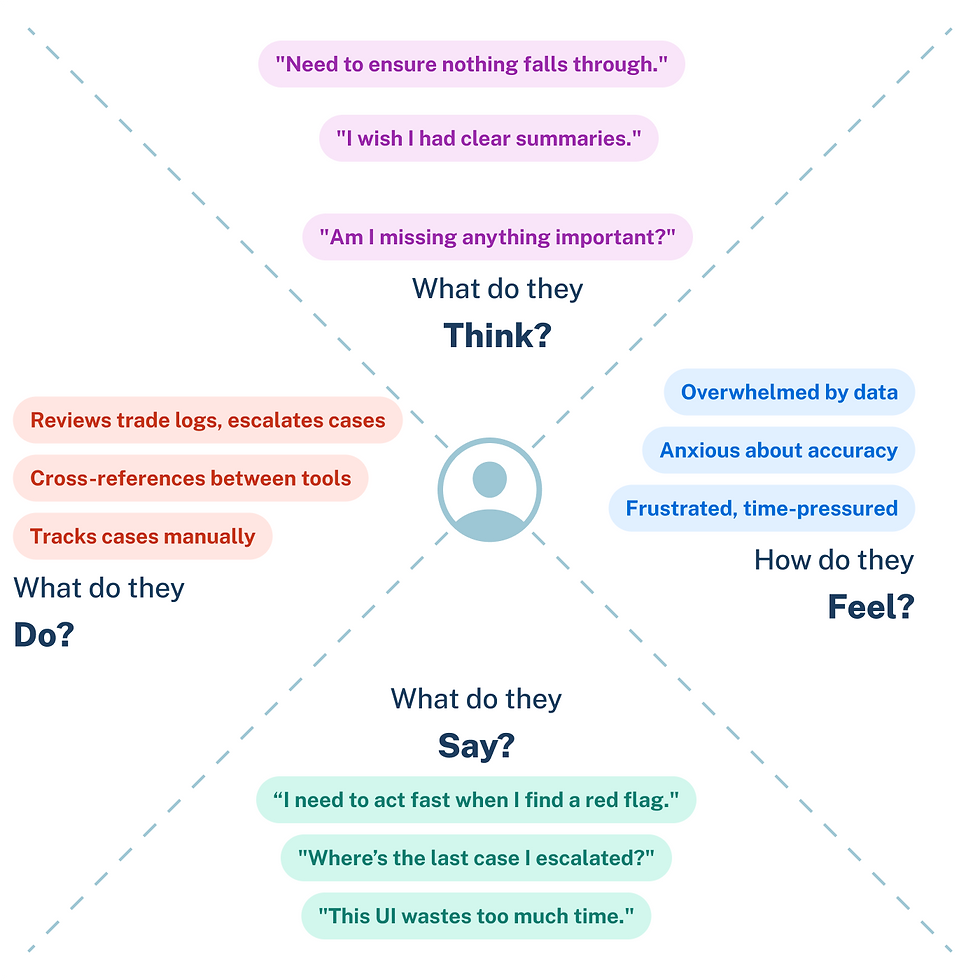Trade Surveillance
- sudipta saha
- Jul 11
- 1 min read
Trade surveillance is a desktop application that is used for monitoring trade. The workflow of the project helps the data analyst to analyze threats and fraud in the trading world.

Problem Statement: Trade analysts face challenges identifying and tracking suspicious trading activities efficiently due to fragmented interfaces and slow, non-intuitive workflows. Analysts need a centralized system to monitor trade patterns, escalate suspicious trades with appropriate context, and track case resolution status over time.
Solution Statement: Design a streamlined, analyst-friendly desktop application that consolidates surveillance data into a clean dashboard, enables intuitive escalation of suspicious trades via a modal form, and provides a dedicated history view for all escalated cases. The interface must support data-rich visuals, fast interaction, and clarity in critical workflows.
Design Process
Research & Discovery
Stakeholder interviews with compliance officers and data analysts
Competitive analysis of financial surveillance tools
Define
User personas
Journey maps
Problem scenarios
Ideate
Low-fidelity wireframes for each module
User flow diagrams
Design
High-fidelity wireframes and UI prototypes
Visual system focusing on clarity, minimalism, and accessibility
Validate
Usability testing with real analysts
Iteration based on feedback
Persona

Empathy Map

Journey Map

Low-Fedility Wireframes
High-Fidelity Wireframes
Conclusion
This project balanced data density with interface clarity to support high-stakes decision-making by analysts. By streamlining the workflow into three logical modules—dashboard, escalation, and confirmation—the tool now enables faster threat detection, intuitive escalation, and transparent case management. The result is a measurable improvement in analyst productivity and reduced operational risk.























Comments